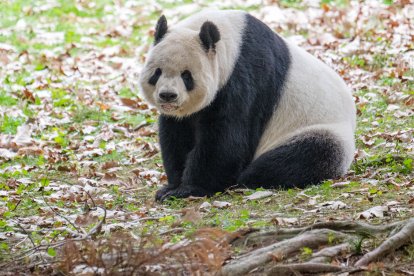Smithsonian National Zoo's giant pandas leave the United States for China
After 50 years, the journey of these animals marks the end of the panda program in Washington, D.C.

(JIM WATSON / AFP)
Upon a visit to the Smithsonian National Zoo in Washington, D.C., one will notice that some of its most famous animals are missing. The giant pandas that inhabited the zoo are no longer there. The 26-year-old patriarch, Tian Tian; his partner Mei Xiang, 25; and their 3-year-old cub, Xiao Qi Ji, are currently heading to their home country of China.
This Wednesday morning, the three animals began a journey that will take them to their new destination: the Chinese Association for Wildlife Conservation, located in the city of Chengu, China. The trip will last 19 hours and marks the end of the accommodation program that the zoo had carried out with the Chinese government for 50 years. This deal, as reported by Axios, expires next month after being extended a decade ago for $10 million.
Organizing the departure of the giant pandas has been a complicated task. They were loaded into individual boxes that will be shipped via a special plane, the FedEx Giant Panda Express, to their new home. But they will not travel alone. They will be accompanied by the chief veterinarian of the Smithsonian National Zoo and their keepers. They will ensure that the three animals have water, bamboo and their favorite treats throughout the journey.
Will pandas return to the United States?
Zoo staff said in statements reported by CNN that they hope the trip is simply a "pause" in the program they were carrying out with the Chinese government. In fact, Bob Lee, director of animal care at the Smithsonian National Zoo, explained that the necessary paperwork has already been filed to have giant pandas brought back to the zoo: "We’re hopeful for the future, so we have submitted an application that’s being reviewed."
While that happens, Americans who want to see giant pandas will have to head to Atlanta Zoo. There are still two cubs and their parents there. At least until next year, when these animals are also expected to return to China.
RECOMMENDATION




















